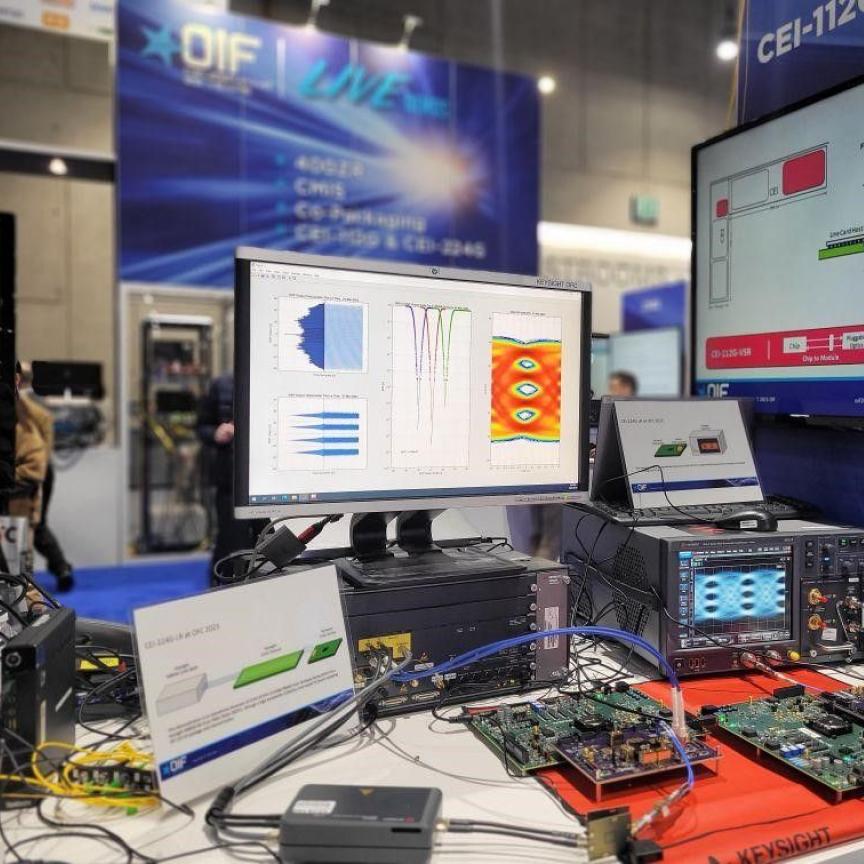Jonathan Homa takes a look at how the economic benefits of 400G optical fibre links can be unlocked
In most walks of life, two fours are exactly the same as one eight. But you can trust telecoms to be different.
Two of the new breed of standard pluggable 400G ZR+ optical transmission units can deliver better performance, over longer distances and at a lower cost than one 800G proprietary embedded module. Why is that? Strangely enough, the answer lies in the maths.
When experts gather to talk about networks, they can usually be relied on to talk about future needs and developments. However, when customers gather to discuss the same topic, they can more often be relied on to firstly talk about current requirements. That’s not to say customers do not take a longer-term view, it is just that meeting the needs of today will usually take priority.
Headline grabbers
So, while the headlines may be filled with the capabilities of faster transmission speeds such as 600G, 800G or even beyond that, these headlines quite possibly distract from the main challenges customers face right now. That is to efficiently transmit 100GbE clients today, and 400GbE clients in the very near future.
That, in turn, leads to the search to do so economically, over both metro distances and long-haul networks. Increasingly, this is leading to a market desire for an optical fibre transport network with ubiquitous 400G lanes. That type of network is seen as the best solution for today and tomorrow.
As with many other industries, the first available solutions to potentially deliver this 400G network were bigger and more expensive than the solutions coming to market right now. Specifically, they were embedded modules, proprietary to the limited number of vendors producing them, and both bulky and power-hungry compared to the interoperable, pluggable units from multiple vendors that are hitting the market now.
Worth the wait
Getting this type of functionality down to a constrained form-factor takes time and innovation – but it is generally worth the wait.
Because we can now see a flexible network future that is available today as these pluggable units are highly configurable in transmission terms. And this also becomes very important in network economic terms – even more so when you take into account the laws of physics in terms of network construction.
In pure physics or technical terms, how far a signal can travel along an optical fibre cable all comes down to the maths, or rather to the modulation. An optical fibre link that uses less dense modulation will always, without fail, transmit further and stronger than one with more dense modulation.
And it is those laws of physics that can deliver some interesting economic dynamics. Up until now, trying to achieve high speed end-to-end transmission has generally relied on an embedded 800G module driving the link. These modules operate at a very fast baud rate of 95GBd, and that requires dense modulation of about 5 bits-per-symbol. What that means is that over a certain distance, the signal will weaken and no longer be capable of maintaining 800G quality.
The situation changes though when instead of one 800G module, two 400G pluggable units are configured to be used in tandem. The baud rate required for 400G is lower (64Gbaud) and the modulation a lot less dense at 4 bits per symbol. This means the signal resolution doesn’t weaken as quickly and as a result the overall distance achieved is longer.
On the money
You might reasonably ask what is the economic benefit – after all, it requires purchasing two pluggable units instead of one embedded module? It is simple. These new pluggable modules are less than half the price of current embedded units. Furthermore, these mathematics and economics work whether the requirement is for short haul over metro distances or long haul over regional distances.
Two 400G ZR+ pluggable units are better than one 800G embedded unit within metro areas; and – using the same principles of reducing modulation to carry the signals further – two pluggable units at 200G work better than one embedded unit at 400G over regional and long-haul distances.
The telecoms community and industry is really embracing the goal of creating a nationwide network of standardized 400G lanes across the optical transport highway. Until recently, the only way to do that would have been with the embedded, monolithic proprietary modules.
Also, some versions of these small form factor pluggables, can go directly into a switch or a router. Being interoperable, and cheaper to run in terms of power, they are now providing a whole new set of configurable building blocks to support connections over metro and long-haul distances. In doing so, they are rewriting the economics of optical network construction and its operating costs.
Some of the latest 400G ZR and ZR+ pluggable units are proving that two 400s can be greater than one 800. In fact, they are showing that two is better than one in every way, both to solve the challenges of today and to build the network of tomorrow.
Jonathan Homa is senior director of solutions marketing at Ribbon Communications


